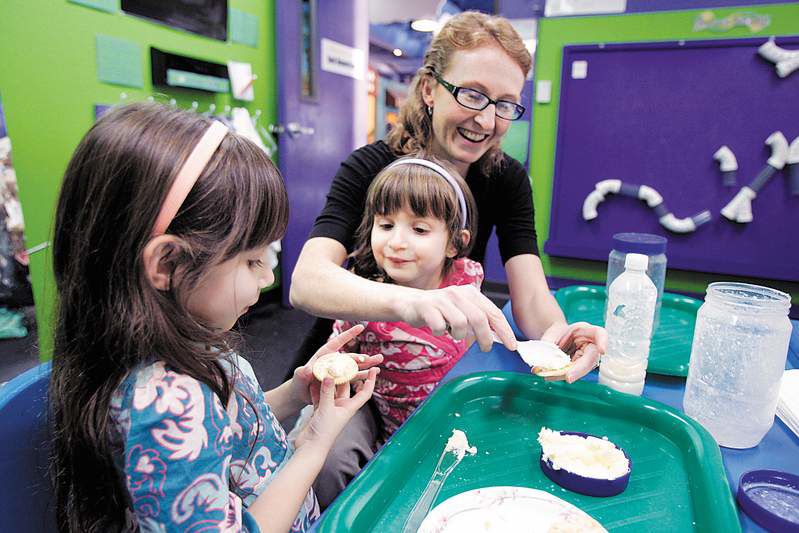What could be better than butter?
Published 4:10 am Monday, November 24, 2008

- Twins Emma, left, and Bella Morton, 4, of Redmond, with their mother Nishka Morton, 36, spread butter they made onto crackers Sunday at Working Wonders Children’s Museum.
Emma Morton licked her lips, then reached for some more butter to spread onto crackers at the Working Wonders Children’s Museum on Sunday.
Minutes before, the 4-year-old had been holding a bottle of heavy cream. But the cream had transformed, and she was a big fan of what she’d been able to create in the science experiment.
“It’s really good,” Emma said.
Every Sunday, Working Wonders Children’s Museum in The Old Mill District runs Super Science Sundays, a drop-in series in the Mindstein’s Lab. The Sunday lab series changes each week, focusing on physics, biology, engineering and other scientific disciplines. Sometimes children are invited to create bridges out of paper and boats out of foil, then place pennies on them to see if they’ll survive the weight.
Other times the children are invited to play with oatmeal or shaving cream. On Sunday, the experiment was all about butter.
The mini-scientists placed some heavy cream into jars and recycled water bottles, then screwed the lids on tightly and started shaking. Within 10 minutes, the mixture had turned to butter.
On Sunday, Emma, 4, joined her twin sister Bella and her mother, Nishka Morton, 36, at a little blue table in the lab. The Redmond family comes to the museum often, and Emma was ready to make some butter.
“Are you good at shaking?” asked Jack Nicklaw, an administrative assistant and discovery guide for the museum.
“Yeah, my mom can shake real fast,” Emma said.
But 10 minutes of shaking a bottle back and forth was a daunting challenge, and soon Emma and Bella were watching Morton carry out the heavy labor.
“You didn’t tell me I’d get a workout,” Morton said to Nicklaw, laughing.
With the experiment under way, conversation turned to other science experiments. Emma spoke about discovering that pumice could float.
“It has air in it,” she said.
When the butter began to harden in the bottle, Emma and Bella looked surprised. Soon, though, Emma was licking her lips and getting ready for a taste.
Morton spread the mixture onto crackers, and the girls tasted it tentatively. Soon, they were munching away.
“I love this butter,” Emma said, reaching for another cracker.
Nicklaw led Sunday’s science experiment. Clad in a lab coat, he participated in the experiment along with the children, looking just as surprised as they were when the mixture became edible butter.
“Sometimes the kids are like, ‘Whoa,’” Nicklaw said. “Sometimes they’re like, ‘Whatever.’ … We want to engage kids instead of them just watching.”
But not everyone who participated in the experiment was convinced of the butter’s tastiness.
Ethan Crawford, 6, was visiting the museum from Redding, Calif.
As Emma spread the butter onto another cracker, he wrinkled his nose.
“That doesn’t look good,” he said.
But the shaking? That looked like fun to him. Grasping an old peanut butter jar in his hands, he threw his weight behind it and began to shake as hard as he could.
Ethan’s father, Peter Crawford, 32, took turns with him.
“This is quite an education,” Crawford said, laughing.
Within minutes, Ethan’s jar contained a hunk of butter.
“It’s done alright,” he said. “It’s done, it’s done, it’s done.”
Nicklaw scooped the butter out and put it in a cup. But Ethan wasn’t interested.
“It doesn’t look good,” he said. But he enjoyed the process. “The shaking part, I want to do it again.”






